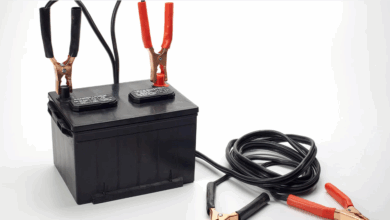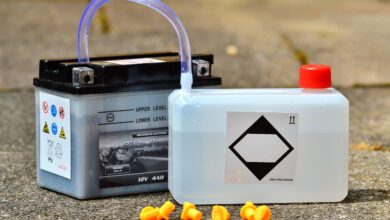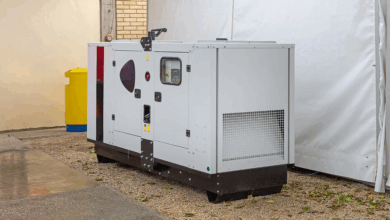Ensure Power Security: Best Generators for Your Home

Ensure Power Security: Best Generators for Your Home
Imagine this: A fierce storm rolls through, knocking out power. Your lights flicker and die. The refrigerator hums to a halt. The HVAC system goes silent. In a world increasingly reliant on electricity, losing power isn’t just an inconvenience; it can disrupt daily life, cause significant financial loss (hello, spoiled food!), and even pose safety risks. From keeping essential medical equipment running to maintaining comfortable temperatures and simply staying connected, reliable electricity is a modern necessity.
While utility companies strive for uninterrupted service, aging infrastructure, severe weather events, and unforeseen emergencies can leave you in the dark for hours or even days. This is where a home generator steps in, acting as your personal power lifeline, providing the security and peace of mind that comes with knowing you’re prepared for whatever comes your way.
But with various types, sizes, and features available, choosing the "best" generator for your home can feel overwhelming. This article will guide you through the process, helping you understand your options and make an informed decision to ensure your power security.
Why Power Security Matters More Than Ever
Beyond the obvious inconvenience of a blackout, consider the critical functions power enables in today’s homes:
- Food Preservation: Refrigerators and freezers stop running, leading to hundreds of dollars in spoiled food.
- Heating and Cooling: Extreme temperatures, whether scorching heat or freezing cold, can become dangerous without functioning HVAC systems.
- Medical Needs: Life support systems, oxygen concentrators, and refrigerated medications require continuous power.
- Water: Many homes rely on electric pumps for well water.
- Communication & Information: Internet, Wi-Fi, and the ability to charge phones and laptops are essential for work, school, and staying informed during an emergency.
- Security: Alarm systems, electric fences, and exterior lighting cease to function.
- Modern Living: Everything from cooking appliances (microwaves, electric stoves) to entertainment systems relies on power.
A generator mitigates these risks, allowing you to maintain essential functions and a degree of normalcy during an outage.
Understanding Your Options: Portable vs. Standby Generators
The first major decision you’ll face is choosing between a portable and a standby generator. They serve different purposes and come with distinct characteristics.
-
Portable Generators:
- How they work: These are smaller, wheeled units typically powered by gasoline, though some run on propane or diesel. You manually start them and plug appliances or power cords directly into their outlets, or connect them to a transfer switch (manual) to power select circuits.
- Pros:
- Lower initial cost.
- Relatively easy to move (though heavy).
- Versatile – can be used for camping, job sites, etc.
- Simple setup for basic use (though connecting to a home requires more care).
- Cons:
- Require manual start-up during an outage.
- Limited power output – generally not enough for a whole house.
- Require refueling with gasoline, which has a limited shelf life and can be scarce during widespread outages.
- Can be quite noisy.
- Must be operated outdoors, far from windows and doors, due to carbon monoxide risk.
- Need heavy-duty extension cords or a transfer switch for home use.
- Best For: Budget-conscious homeowners who need to power only a few essential appliances (refrigerator, lights, a few electronics) during relatively short outages.
- Standby Generators (Automatic):
- How they work: These are large, permanently installed units, similar in appearance to an outdoor air conditioning unit. They are typically powered by natural gas or propane supplied directly from your home’s line or a large tank. They are connected directly to your home’s electrical panel via an automatic transfer switch (ATS). When utility power is lost, the ATS detects the outage, signals the generator to start, and seamlessly switches your home’s power source to the generator. When utility power returns, the ATS switches back and the generator shuts off.
- Pros:
- Automatic operation – provides power whether you’re home or not.
- Can power essential circuits or even your entire home.
- Run on natural gas or propane, providing a continuous fuel source (if connected to a gas line) or large stored supply (propane).
- Generally quieter than portable generators (though still produce noise).
- Permanently installed outside, designed for safe, long-term operation.
- Adds significant value to your home.
- Cons:
- High initial cost (unit plus installation).
- Requires professional installation (gas fitter, electrician).
- Requires regular professional maintenance.
- Best For: Homeowners who experience frequent or long outages, need to power critical systems (like medical equipment, sump pumps, or HVAC), want the utmost convenience and reliability, or wish to power most or all of their home during an outage.
Inverter Generators: A notable subset of portable generators. They use advanced technology to produce cleaner, more stable power (safer for sensitive electronics like laptops). They are also typically quieter and more fuel-efficient than conventional portable generators. Excellent choice if you need portability but primarily want to power electronics or appliances with variable speed motors.
Choosing the Right Generator: Key Considerations
Once you’ve decided between portable and standby, several factors will influence your final choice:
-
Power Needs (Wattage): This is arguably the most critical factor. You need to calculate the total wattage of the appliances and systems you want to power simultaneously.
- List essential items (fridge, freezer, furnace fan, well pump, lights, critical medical devices, electronics).
- Note the running wattage for each item (found on the appliance label).
- Note the starting or surge wattage for items with motors (refrigerators, pumps, HVAC fans) – this is often 2-3 times the running wattage. The generator needs to handle the highest single starting wattage plus the running wattage of all other items you want to power at the same time.
- Add up the running watts of everything, then add the largest starting watt requirement. This gives you a rough estimate of the minimum running watts needed.
- Recommendation: It’s highly recommended to consult with an electrician to accurately assess your power needs and ensure proper circuit planning, especially for standby or manual transfer switch installations.
-
Fuel Type:
- Gasoline: Widely available, but requires storage, goes bad over time (needs stabilizer), and finding it during a regional outage can be difficult.
- Propane: Cleaner-burning than gasoline, longer shelf life, can be stored in large tanks for extended runtime. Availability can be an issue during widespread emergencies if your tank runs low.
- Natural Gas: Most convenient for standby units if you have a natural gas line. Provides an unlimited supply during most outages (unless the gas line itself is affected).
- Diesel: Common for very large generators, efficient, but fuel storage requires care, and diesel engines can be harder to start in cold weather.
-
Automatic Transfer Switch (ATS): Essential for standby generators for seamless, automatic power transfer. For portable generators, a manual transfer switch is the safest way to connect to your home’s circuits, preventing dangerous "backfeeding" into the utility lines, which can injure or kill utility workers.
-
Noise Level: Generators are loud, measured in decibels (dB). Standby units are generally quieter than portables, but check specs. Consider your neighbors and local noise ordinances. A difference of 10 dB is perceived as roughly doubling the volume.
-
Runtime: How long will the generator run on a full tank (portable) or its fuel source (standby)? Natural gas offers unlimited runtime, while propane tank size determines runtime for standby units. Portable generator runtime varies greatly based on load and tank size.
-
Features: Look for electric start (especially on larger portables), fuel gauge, multiple outlets (for portables), low-oil shutdown (protects the engine), GFCI outlets (for safety), and potentially remote monitoring capabilities (for standby units).
- Budget: Portable generators range from a few hundred to a few thousand dollars. Standby generators, including installation, typically cost anywhere from $5,000 to $20,000 or more depending on size and complexity.
Installation and Safety
This cannot be stressed enough: proper installation and safe operation are paramount.
- Standby Generators: Always require professional installation by licensed electricians and gas fitters to ensure compliance with codes and safe connection to your home’s electrical system via an ATS.
- Portable Generators: While the generator itself isn’t ‘installed’ in the same way, connecting it to your home’s electrical panel requires a manual transfer switch and professional installation to prevent backfeeding. Running cords through windows or doors is a temporary, less safe solution and creates security and weatherproofing issues.
- Carbon Monoxide (CO) Risk: Generators produce lethal carbon monoxide gas. NEVER run a generator indoors, in a garage, or near windows, doors, or vents that could allow fumes into your home. Ensure adequate ventilation and place units far away (at least 20 feet) from your house. Install CO detectors in your home.
- Fuel Safety: Store fuel (especially gasoline) safely in approved containers away from living areas and ignition sources.
Maintenance is Key
A generator is an investment you hope never to need, but when you do, it must work. Regular maintenance is crucial.
- Portable: Check oil levels, change oil per manufacturer schedule, inspect air filter, check spark plug, and add fuel stabilizer to gasoline if storing for extended periods. Run the generator periodically (e.g., every few months) under a load to ensure it starts and runs properly.
- Standby: Most standby generators have automatic weekly test cycles. However, they require professional servicing typically annually or bi-annually to check fluids, filters, battery, and connections.
Finding Your "Best" Generator
There isn’t one single "best" generator for everyone. The best generator for your home is the one that reliably meets your specific power needs, fits your budget, and is installed and maintained correctly for your safety and convenience. Reputable brands in the market include Generac, Kohler, Cummins, Champion, Honda, and Yamaha, among others, each offering a range of options in both portable and standby categories. Research specific models, read reviews, and talk to trusted electricians or generator dealers in your area.
Conclusion
In an era of increasing power grid vulnerability, investing in a home generator is a proactive step towards ensuring your family’s comfort, safety, and security during unexpected outages. By understanding the different types of generators, accurately assessing your power needs, considering fuel options, and prioritizing professional installation and ongoing maintenance, you can select the right unit to serve as your dependable backup power source. Don’t wait until the lights go out – plan for your power security today and gain the invaluable peace of mind that comes with being prepared.
FAQs: Home Generators for Power Security
Q1: How much power (wattage) do I really need?
A1: This depends entirely on what you want to power. List your essential items (fridge, furnace fan, lights, etc.) and their wattage requirements (running watts plus the largest single starting watts). Add these up to get a rough estimate. It’s highly recommended to consult an electrician for an accurate load calculation specific to your home’s wiring and appliance needs, especially if considering a transfer switch or standby unit.
Q2: Is a portable generator enough for my home?
A2: Portable generators typically provide enough power for only the most essential items (like a refrigerator, some lights, and electronics) by running extension cords or using a manual transfer switch for a few dedicated circuits. They are generally not designed to power an entire home or multiple large appliances simultaneously.
Q3: Can I install a generator myself?
A3: You can typically set up a portable generator and run extension cords yourself, following safety guidelines. However, connecting any generator to your home’s electrical system (even with a manual transfer switch for a portable unit or installing a standby generator and ATS) requires a licensed electrician and often a licensed gas fitter (for natural gas/propane) to ensure safety, code compliance, and prevent dangerous backfeeding onto the utility grid. Professional installation is strongly recommended, if not legally required.
Q4: How much fuel will a generator use?
A4: Fuel consumption varies greatly depending on the generator’s size (wattage output), the load it’s powering, and the fuel type. A large generator running at high capacity will use significantly more fuel per hour than a smaller one or one running at a low load. Check the manufacturer’s specifications for estimated runtime at various loads.
Q5: Are generators safe to run?
A5: Yes, if operated correctly. The primary danger is carbon monoxide poisoning from engine exhaust. NEVER run a generator indoors, in a garage, or too close to a home’s windows, doors, or vents. Ensure ample ventilation and placement far away from occupied structures. Also, ensure proper electrical connections (via transfer switch) to avoid backfeeding.
Q6: What is an automatic transfer switch (ATS)?
A6: An ATS is a device that automatically detects when utility power fails, disconnects your home from the utility line, starts the standby generator, and transfers your home’s electrical load to the generator. When utility power returns, it automatically switches the load back and shuts the generator down. It provides seamless, hands-off power backup. For portable generators, a manual transfer switch does a similar job but requires manual operation.
Q7: How noisy are generators?
A7: Generators produce significant noise. Portable generators are often the loudest (65-85+ dB). Standby generators are generally quieter (55-70 dB, often with insulated enclosures) but are still audible. Check the generator’s decibel rating (dB) at a specified distance (e.g., 23 feet or 50 feet) when comparing models.
Q8: How often should I maintain my generator?
A8: Follow the manufacturer’s recommended maintenance schedule. For portable units, this typically involves oil changes, filter checks, and periodic test runs. Standby units usually perform automatic weekly tests but require professional servicing annually or bi-annually for comprehensive checks of all components. Regular maintenance ensures reliability when you need it most.




![How to Bypass CO Sensor on Generator – [4-Step Safety Guide]](https://www.generator411.com/wp-content/uploads/2025/08/co-sensor-on-generator-390x220.png)